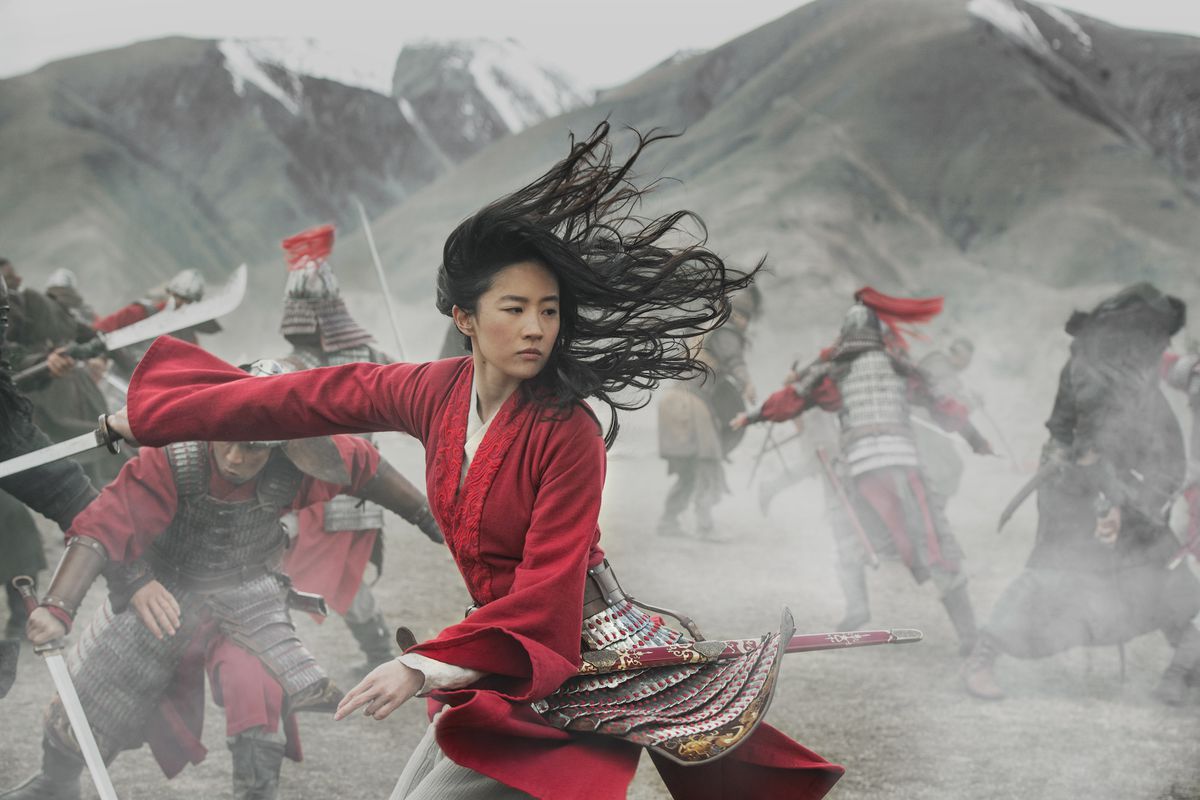There are countless moments to dissect in Game of Thrones’ final episode, but the finale’s most potent image may be Daenerys Targaryen, fresh off of razing King’s Landing, framed by a dragon’s wings. Fans described the shot as “epic” and showered it with effusive social-media posts — but it also quickly became a meme, mocked by viewers who thought the symbolism was too on-the-nose. (She’s the blood of the dragon: hence, dragon wings.) The new live-action Mulan tries to pull off its own version of the scene in a dramatic moment, but only manages to capture just how cheesy this overused motif is.
[Ed. note: Spoilers for the 2020 Mulan follow.]

Photo: Disney
Toward the end of the film, as Mulan seemingly flies into a climactic battle against Bori Khan, the phoenix that has accompanied her on her journey rises up behind her, making it look as though its wings are Mulan’s. But it isn’t the triumphant moment it’s intended to be — it looks silly, not least because the phoenix is so obviously a CGI creation.
The best-known iteration of the “wing shot” may be in Game of Thrones, but it’s cropped up fairly often in film and TV — in Alejandro Iñárritu’s Birdman, in The Handmaid’s Tale, in Tim Burton’s Sleepy Hollow — as a shorthand for a character’s significance, or as a way of indicating ascendance or otherworldliness. The motif’s striking visual quality has also made it a prime choice for advertisements, but the imagery has become most prominent on social media, where people can insert themselves into those very pictures.
The most infamous example may be “the first ‘influencer-only’ mural,” which opened (to intense criticism) in 2018. The gatekeeping around the mural, which depicted a pair of angel wings meant as a background for social-media photos, was meant as a promotional stunt for the scripted comedy Like & Subscribe. Still, the situation was believable enough that it provoked outrage on social media. As the situation was initially presented, anyone who wanted to take their picture in front of the mural would have to show a security guard proof of either a verified Twitter account or more than 20,000 Instagram followers in order to be allowed access.
Other, similar wing murals are easily accessible, and have seemingly become an inescapable part of life in the 21st century. The Global Angel Wings Project has put such murals up all over the world in an effort to remind people “that we are the angels of this earth.” The recent revival of Angels of America had artist Kelsey Montague (notably also the artist behind a set of wings Taylor Swift posed with in 2014) paint a set of wings outside the Neil Simon theater specifically for the show, and had a pair of neon wings inside for audience members to pose with. Wing murals also constantly crop up in search results like “The Most Instagrammable Walls in NYC.”
Their places on those lists are well-deserved — they are visually pleasing. They’re also gimmicks, shallow stunts that provide a quick photo op with little meaning. Their use in film and TV is no different. It’s a way of provoking an, “Oh, cool!” reaction without narratively or symbolically earning it. In Mulan’s case, it’s an empty attempt at conveying a character’s strength. The film’s brand of feminism is facile. Mulan is strong because she lets down her hair and dramatically takes off her armor, even though she’s charging into a battle where armor would probably be useful. She’s special not because she’s brave in the face of danger, but because she was born with a lot of chi. And the loyalty — one of the three tenets of belief that defines her — is to a patriarchal society that ostracizes any other women who show the least bit of discontent with the limits placed upon them.
In that sense, the wing shot is fitting; Mulan is ultimately a shallow movie. But it’s still so unjustified, undignified, and silly that it yanks viewers out of the movie, and into all the other properties that have already claimed that iconography, from Twilight to influencer culture. It’s a scene ripe for a social-media-worthy screengrab, but not much more.
Mulan is available now via Premier Access on Disney Plus.




















![[Book Review] The Blade Itself (The First Law Trilogy) by Joe Abercrombie](https://bendthekneegot.com/wp-content/uploads/2018/01/1516047103_maxresdefault-218x150.jpg)
















